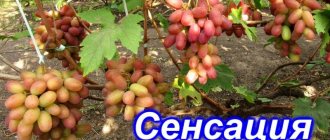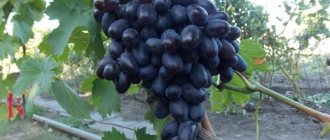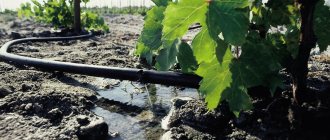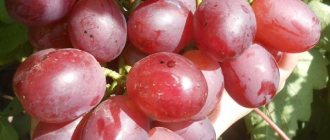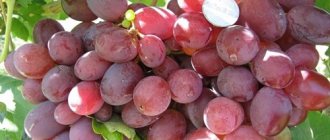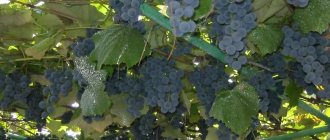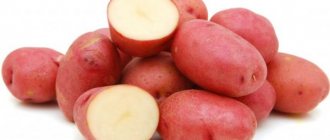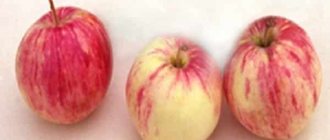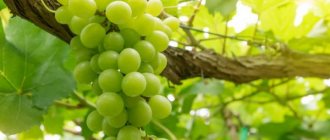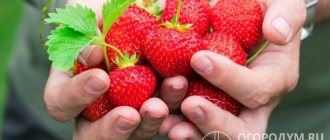Chardonnay grapes are one of the three grape varieties from which true French champagne is produced.
Homeland - France, historical provinces of Burgundy and Champagne. From the point of view of experts, the wine of each of these regions has its own character, and it is very easy to distinguish Chardonnay from cool Champagne and hotter Burgundy.
In addition to France, this grape is loved and grown everywhere in Northern Italy and other countries of Western and Eastern Europe. Almost every wine-growing region has grape plantations of this variety.
In the USA, in California, there are large plantations of Chardonnay grapes, and Californian wine has earned international recognition from experts.
Among the famous wine varieties, it is also worth noting Merlot, Malbec and Sangiovese.
Description of the Chardonnay grape variety
Chardonnay is a technical grape variety, one of the most valuable in the world, intended for wine production. It is called universal for its unique feature: the plant adapts to a wide variety of conditions and produces a harvest under any circumstances. Moreover, in any case, you can cook from ripe berries.
Experts say that it is impossible to make bad wine from Chardonnay. A drink made from grapes grown in hot or cold climates is simply different in taste, but equally incomparable.
About wine
Chardonnay is the most sought after and popular variety among wine gardeners. This is a very ancient variety. According to legend, it was obtained in the Middle Ages by French monks. According to another version, it appeared after the return of the Crusaders and originates from the vineyards of Lebanon. For a long time, Chardonnay was considered a variety of Pinot Nour. However, research by apmetologists claims that the variety is independent.
Winemakers say that this variety is simply ideal for the production of alcoholic beverages, since the berries differ from others in their resistance to various influences. That's why professionals say that you can't make a bad drink from Chardonnay.
The most famous strain is from Burgundy. The most famous collection wines are produced here. However, the variety is also known for the fact that it allows the production of much more affordable wines. In addition, grapes are used to produce sparkling wines. The best wines are considered to be from Burgundy and California, as well as Crimea.
This material will tell you about wine made from grapes at home.
The variety is low-yielding. It is grown only for processing. The bushes reach medium height, the shoots are strong. The clusters are small, the weight of the berries does not exceed 3–4 g. The taste of the berries, unlike wine, is considered moderate, although the taste is delicate and the juiciness is high. What distinguishes them from other varieties is the characteristic varietal aroma.
Wine made from Chardonnay grapes can be aged for quite a long time, but experts advise aging it no more than 30 years.
The plant is sensitive to cold, so it is difficult to grow it in northern and even temperate latitudes.
Conquest and conquest of the world
Since this variety is still the most widely cultivated today, in order to clarify its homeland and ancestors, large-scale research in the field of ampelography was carried out. Researcher Pierre Gale proved the absolute independence of the variety and its unique properties for breeding hybrids. Despite the fact that Chardonnay is cultivated over vast areas and is very unpretentious, the quality and organoleptic properties of wines produced in different regions differ significantly. If French wines have a refined taste, then those produced from Spanish grapes lack the subtlety of Burgundy and the sparkling amazing color of the Californian variety. Experts also note the high quality indicators of wines made from Crimean fruits. The qualitative composition of sugar, acids, microelements and other components directly depends on the soil on which the vine is grown, the climatic conditions, the level of sunlight and heat, as well as the amount of precipitation that falls per year. For example, the climate of the Mediterranean and Crimea, much more extreme weather conditions compared to Burgundy and Champagne, change the taste and aroma of the final product. But Pyrenean and Crimean wines retain their competitiveness and adequately represent their homeland on the international market.
Properties
Chardonnay is a light grape. This means that the berries are rich in iron, not just potassium and calcium. The taste of the grapes is very sweet, although the berries themselves are small. There is no noticeable acidity in ripe berries.
Chardonnay should not be allowed to overripe. In this case, the berries lose acidity and become unsuitable for making wine.
Calorie content
Chardonnay's sugar content reaches 18–22%. But thanks to the presence of seeds - 2-3 in each berry, as well as the high potassium content, the calorie content of grapes is only 60.3 kcal per 100 g and is noticeably inferior to the calorie content of dark varieties. Read about the characteristics and description of the Blagovest tomato variety here.
Despite its high calorie content, it is an integral part of several diets.
There are many clones of this variety. Their berries differ in the level of sugar content and acidity and, accordingly, calorie content.
Benefits and harms
Chardonnay includes many micro-macroelements, as well as vitamins. However, the main advantage of grapes is the high content of bioflavonoids. These substances are strong antioxidants, which gives grapes the glory of an elixir of youth. bioflavonoids increase and maintain the elasticity of capillary walls. Constant consumption of grapes significantly improves microcirculation and promotes the health of the circulatory system.
- If dark grape varieties are used for liver diseases, then light ones are the best option for kidney problems. The record potassium content promotes the excretion of water, which facilitates the work of the kidneys.
- Chardonnay is very useful for pulmonary and bronchial diseases - tuberculosis, asthma, bronchitis, as it has a pronounced mucolytic effect.
- Grapes thin the blood, that is, prevent the formation of blood clots.
- Chardonnay is useful for anemia due to its high iron and glucose content. Its lower calorie content makes it possible to use it in recovery diets.
- The ability to remove swelling allows it to be used by people with large body weights.
- Grapes have anti-inflammatory and diuretic properties, so the variety is recommended to be used for certain urolithiasis, enzyme system disorders, and gallbladder diseases.
- Chardonnay is recommended for pregnant women and children, as its berries contain a lot of iron and vitamin C.
This variety also has disadvantages.
- In case of intestinal disorders - diarrhea, grapes should be discarded, since the berries help relax the intestines.
- If you have high blood pressure, use with caution. The ability of grapes to remove water can result in increased blood pressure.
- It is better to eat berries than juice, as the latter is too concentrated and can damage tooth enamel.
Acidity
The acidity of Chardonnay ranges from 8.2 to 11.6 g/l. The indicator depends on the grape ripening conditions. In overripe berries, the acidity level decreases sharply, which makes them unsuitable for processing. In this case, grapes can be consumed fresh; they only become sweeter.
The beneficial properties of this grape variety also lie in the fact that, thanks to the high level of carbohydrates in the berries, they are able to quickly replenish the body’s energy potential, and even a small amount of such fruits allows you to quickly get rid of the feeling of hunger.
Characteristics of the bush
According to its morphological characteristics, Chardonnay clearly belongs to the geographical group of Western European countries, so the version about the breeding of the variety by monks is closest to the truth. This is confirmed by the fact that the grapes demonstrate the best yield and taste in the conditions inherent in the south of France and Italy.
Chardonnay bush is vigorous, semi-spreading. The buds appear very early, which in temperate and northern latitudes often leads to freezing, as young shoots and buds become victims of late frosts. It does not require intensive pruning, although it is necessary to get rid of old and dry leaves and shoots. The flowers on the bushes appear bisexual, so the plant does not need pollination.
Read about pruning grapes in spring at this link.
Vine
Young vines have a greenish tint, but by the second year they turn brown. The nodes are practically not visible. The vine is sensitive to cold: -20 C, the grapes can only withstand conditionally, so the bush must be covered for the winter.
Annual vines ripen best - 90%.
The leaves of the plant have a very characteristic shape: coarsely wrinkled, entire, with a petiole border. The leaves are medium in size, rounded, with 5 lobes. The teeth at the ends of the blades are triangular.
The first leaves of the plant are light green with a grayish tint, the rest become increasingly golden. The leaves of old vines take on a bronze hue. In autumn, all the foliage turns lemon yellow.
Bunch
The bunch reaches medium size - up to 11 cm long. The weight is small - 95–130 g. The shape of the bunch is cylindrical-conical, of medium density. As a result of severe shedding of the ovaries, by the time of ripening the bunch becomes loose.
The cluster is of medium size (11-13 cm long, 8-10 cm wide), cylindrical-conical, dense, medium-density and loose as a result of strong shedding of the ovaries.
The berries are medium-sized - up to 16 mm in diameter and weighing up to 4 g. They have a greenish-white color with a golden tint on the sunny side. The skin is dense, almost hard, there are only 2-3 seeds, the proportion of juice is at least 75%. The taste of the grapes is sweet, delicate, rather with citrus undertones. The smell also resembles a mixture of citrus and flowers and is a characteristic feature of the variety.
Productivity
The number of fruitful shoots on the bush is only 40%. No more than 2–3 clusters can form on the shoot. Moreover, shedding of the ovary further reduces the yield.
From a hectare of vineyard you can harvest 8–12 tons of grapes.
The taste qualities of the wine obtained from grapes compensate for its capriciousness and low yield. Chardonnay remains one of the most valuable technical grape varieties.
Understanding Clones
Grape clones are pruned branches from a specially selected vine that have identical genetic material to the original source. They can be useful when growers want to cultivate a specific trait or group of traits, such as yield, berry size or acid content. Climate, soil and other factors determine the success that a particular clone will achieve in a particular location.
These clones have a certain similarity to field selection, or what the French often call mass selection, where a group of plants from a vineyard is cut after harvest and propagated. Ultimately, however, the two options diverge.
“There is inherent genetic variability [with field selection] because not all plants come from the same source,” says David Ramey, founder of Ramey Wine Cellars, a leading California producer of Chardonnay and Pinot Noir.
In the US, grape clones are common in places like Foundation Plant Services (FPS) at the University of California, Davis. Founded in 1958 to distribute pure and botanical biomaterials, FPS maintains over 80 Chardonnay specimens that have specially identified numbers.
However, this can be misleading. After all, some clones numbered FPS could have had different numbers before they were heat treated. Others are referred to colloquially by the producers from whom they originally came, such as the Martini clone taken from the Louis Martini vineyard in Carneros, California, or the Robert Young clone, which was brought from the vineyard of the same name in Alexander Valley.
“In California you have clone No. 4, which I understand used to be No. 108, which is an indication that it came from the Louis Martini vineyard in Carneros,” Ramey says.
Some might call it “Sample #4,” some might call it “Sample #108,” and some might call it “Clone 108” if it were planted before heat treatment. Others might call it a Martini clone, which could be samples 4, 108, or even 5 and 6.
Growing
Growing Chardonnay has a number of features. They are connected not so much with the variety’s ability to survive, but with the quality of the berries and the possibility of their ripening.
- Chardonnay can be accepted on almost any soil, but the true taste of wine appears only in grapes grown on rocky, clay-limestone soils.
- It is preferable to plant the plant on western gentle slopes so that the grapes are provided with maximum sunlight.
- Chardonnay can withstand frost in the air down to -20 C. In fact, this is a rather low indicator, since the plant will not survive freezing of the soil. For the winter, bushes must be covered even in temperate latitudes.
Despite their resistance to low temperatures (down to -20), regardless of the terrain, grapevines must be covered with insulation for the winter.
One of the features of the variety is the early formation of the ovary. Late frosts lead to shedding of the ovary and flower clusters and greatly reduce the yield.
- Chardonnay tolerates drought much better than cold weather. It can also ripen on a lot of cloudy days. But frequent rains at the beginning of summer lead to a decrease in yield.
Planting period
As a rule, grapes are propagated by seedlings. In this case, they follow the general scheme, but taking into account some recommendations.
When planting in spring, soil temperatures should be taken into account - the average daily should be at least +1-C.
The plant can be planted in both spring and autumn. Over the winter, the seedlings acclimatize and take root well.
- The holes are dug 2 weeks before planting. The dimensions of the holes are large - 80*80 cm to accommodate the root system of the seedling. The distance between the holes is 2.5 m. If planted in the fall, then the distance is reduced to 1.5 m. The same is done when grapes are grown in areas with a cold climate.
- A mixture of chernozem with mineral fertilizer or manure is placed at the bottom of the hole. The layer thickness is 25–30 cm. Then the layers are sprinkled with soil.
- Important: if groundwater rises too high on a site, it is necessary to install a drainage system. When the soil moisture is high, the roots of the grapes begin to rot.
- The seedling is placed in a hole so that the root collar is on the surface. Then they are covered with soil and compacted.
- The grapes are watered abundantly - 2-3 buckets for each bush.
- In the first week, the grapes are watered daily - 1 bucket of pre-heated water.
- A week later, the soil around the seedlings is mulched using sawdust, dry grass, and straw.
Read about planting and caring for grapes in open ground here.
Ripening period
Chardonnay and Merlot are medium-ripe varieties.
The growing season is 130–140 days. As a rule, the grapes ripen towards the end of September. However, the variety produces very early ovaries and, as a result, manages to ripen even in a relatively short summer in temperate latitudes. The timing of ripening is affected by the number of sunny or at least days without rain. Cold rains and winds not only make ripening difficult, but also worsen the taste of the berries. They become watery and crack.
Forum statistics
207036 Messages in 1634 Topics from 5593 Users. Last user: Amaya Last message: “Let's talk about the weather in Vash...” ( Today at 07:52:22 ) Latest messages on the forum.
Now on the forum
81 Guests, 13 Users
Users in the last 15 minutes: Ser, Erem, Polyanina Ekaterina, ElenkaF, kosmos, Yura, Evgeniy52, GALINA ANOKHINA, DorontsovPeter, ZaycevAS, Alex65, 77volt, 64nikolay64 [Blocked] [Section Moderator] [Forum Moderator]
Maximum online today: 94 . All-time maximum online: 2758 (28 July 2021, 17:22:51)
Users who visited the forum in the last 24 hours
Total: 293
(Visible: 292, Hidden: 1) 1963, Ser, Erem, Polyanina Ekaterina, ElenkaF, kosmos, Evgeniy52, Yura, GALINA ANOKHINA, DorontsovPeter, ZaycevAS, Alex65, 77volt, 64nikolay64, Vova Kapran, Vasily 53, zsb, Polina77, about zector , Mikhail Alekseevich, Svetla777, Quiet, Marshal, Nikolay S., therapist, Liza, Capricorn, lomakin1969, Alexander Vl., Elvira2017, Andrey76, Slavka, Mikhail77, Tatyana B, Cherkessk, Eugene, Leonidych, vladimirM, yotmast, mers, Serg1707 , SNovichek, hanter64, znakomij, Alexander K, Vardan, Sergey Fer, Anatoly Sivkov, Alexey V, Ilya 77, Andrey Gladilin, Tatyana A., Belgorodets, in Astrakhan, Oksana Kopp, sem_en, Vladimir 153, skier, Igor Viktorovich, slavalimon , Primorets, OlgaOs, SANYCH, 31rus, mystic69, Andrey Tsvetkov, Buba, igor222, Elena Z, vlad51, Kenig, Nikolay Rex, Sergey 1965, Vladimir Buturlakin, DSW, psv1960, Dmitry 77, Vasily V., Vyacheslav03, Natalia Nikolaevna, Sergey Tashchiyan, Igor Sergeevich, alexsandr, kvg, Pioneer, nicson7, Elena Aleshchenko, Alexander-ask-34, Verona, Igor F., Taker, Henry, Yuri72, L.A.P., Gaivoronsky Yuri, Sergeevich, Sergey Chistokletov, Svetlana Streletskaya, Galinka, Alexey Deminov, Igor Naumov, Vyacheslav136, Gloomy, Katrin, AndSanych, Mikhno Alexander, Ded31, Oleg Filippov, Vladimir ++, Lydia58, ALEXANDER BRYANSKY, Vladimir-kanevskaya, DIL, Amber7394, Marina Protasova, TITOVA LOVE, Linx, alexander66, Natalya M, Mikhail Fesenko, Amaya, Alexander71, Boris 1952, tsv, Maximilian, 25nata35, nadia, Igor_K, Alexander Kolesnikov, Ivan Levin, Pitko, weather forecaster, eSAa, cecet71, atseton, Alexander Smirnov, Vladimir Kostochkin, Vladimir Berdnikov, Gocha, pioneer-2, LeXa_KoT, Sergey 61, Sergey Yuriev, alexss, Skif, Vladimir Kovba, dayton, Yuri Semenov, N.A. Sokolov, Pavlentiy, Sa-shura, Volgogradka, Dmitry Anatolyevich, Grandfather Igor, Andrey Lis , Bublichenko Alexander M, Marina Krymskaya, stenlly2010, irahelm, Vyacheslav Vladimirovich, Vladimir Shilov, Aprel, Dmitry Badaev, gheo55, y_fed, rambo, Yagodka, Valentina Ivanovna, Kryn, oleg9f, DED2, Svetlana Korotina, Oleg Ivanovich Zavezen, Eduard., santra, L2k2m7n, Alexander48, Viknik, Andrey 31, m2d, Valery Rastorguev, soshnin yura, Amateur gardener, Galina, Vasily1111, gardener, marlin64, Salex, sergei, Sergey Ko, Ramiz, victor_, potap05, Yuri 36, VitalySD, Inna161 , Vladimir Shcherbinin, Valerie, niy1, cfibr, Andrey68, kulol3, thanatos, Serzh1978, Realist, Artur53, max2008-01, LOZA, AlexanderD, Ded Molodoy, Natasha, Zayac, ketch, Rita, alx-74, Iv Iv, Alexander150, Igor K, Vasily Viktorovich, VeraNiK, kdm57, Veniaminovich, Boris Sokolyansky, , vikbublik, neposny, Evgen, Victoria Aleksandrovna, Serezha 64, Wintel, Airbone, teri, Sergey Lomonosov, Khramov, serginio, Leonty Yarygin, Irina O., Nadezhda Grig , Lyubov S., netolya, Saisan, Alexey Agryzkov, Vadi, Zinaida, Vadim, Alexander Taganrog, Sergey Sukhonos, Snezhinets, evgen_26, nau_63, Masha_sadovod, Gennady163, krasnovlad1, Alexander Zinoviev, Roman Fedorovich, TIS, Alexey Sergeevich, arnyusha, Zheka , Nurtas, kradievska, nick041, Valentina Medvedeva, Sergey43, Andrey S., Nikolay Lipunov, Mst, Vertuoz2, Vladimir VS, NatalyaMed, freesia, Kinna, Mikhail Michurinsk, alekcsan1, VALERY TAMB, Sasha57, MikhAf, Y_Azer, Andrey Beribesov, hunter1955 , nut lover, Keys, Ivan Shmelev, Pestle, anton_slash, Nadymchanka, Sergey 31, Volgar, Pavel 64, Tatyana Volzh, Elektronik_t, Alexander 61
Care
In areas with suitable climate and soil, grapes require virtually no care. The only thing that is required is to protect the plant from late frosts, if they occur.
It is recommended to water with a sprayer, increasing its abundance at high temperatures. To eliminate excess moisture, mulching is carried out.
To slow down the appearance of the ovary, some of the shoots are cut off if the buds swell too early. At the same time, the period of formation of the ovary is postponed by 2 weeks, thereby avoiding the effects of frost.
Like any other variety, Chardonnay and Rochefort prefer certain levels of solar heat and humidity. It is important not to over-moisten the soil, as excess moisture leads to rotting. But at the same time, in case of prolonged drought - more than 3 weeks, the bushes should be watered.
Disease Prevention
Chardonnay is a variety with average disease resistance. Moreover, with increased humidity, resistance to diseases decreases. The most dangerous for grapes are mildew and oidium.
Chardonnay grapes are resistant to diseases such as mildew and oidium. However, if the summer is cold and wet, the fruit may rot and crack.
- Fight against mildew - according to winemakers, the fungus affects the most delicious varieties of industrial grapes. It is easy to identify: round light spots are found on the leaves, after which a white fluffy coating appears - mycelium. First of all, the fungus captures the youngest and juiciest shoots and leaves. If measures are not taken, mildew affects the berries, after which they become unsuitable for processing.
To prevent and suppress the disease, it is necessary, starting in spring, to spray Chardonnay every 10 days with special preparations - Bordeaux mixture, fungicides. In July–August, the treatment is repeated every week. And only after the berries reach a size of 10 mm can you stop spraying.
- Oidium - or powdery mildew, is a fungus and is very resistant. It remains to overwinter in the bark and disappears only in severe frosts. Appears in the form of a light smoky coating and affects leaves and berries. They fight it with sulfur and fungicides.
In the spring, as soon as the vine is well ventilated, the bushes and soil are treated with a copper-containing fungicide - Azrofos, for example. Then they are periodically treated with colloidal sulfur or finely ground sulfur, and the vine, leaves, and soil need to be irrigated with the preparation. The same colloidal sulfur is used for sulfur baths: the entire bunch is dipped into a container. You can also use special drugs - Horus, Skor, Topaz.
Instability to fungal diseases is one of the reasons why it is better to propagate and plant Chardonnay using seedlings rather than layering. It is recommended to purchase seedlings from trusted farms.
Trimming
Since the yield of Chardonnay is small, it is necessary to especially monitor the load of the bush.
conclusions
- Chardonnay is one of the most valuable varieties of technical grapes. Collection wines of the highest quality are obtained from the berries. Fresh grapes are practically not consumed.
- The variety adapts well to cool climates and is grown as in Europe. so it is in America. The taste of wine depends on the area where the grapes are grown.
- Chardonnay does not tolerate frost well, so the bushes need to be prepared for winter.
- The variety is not resistant to diseases and needs protection.
- The yield of the variety is quite low. However, grapes are grown in all more or less famous vineyards for the unique taste of the wine obtained from them.
- Chardonnay does not have a distinct bouquet of its own. However, this is the most “obedient” grape raw material. The variety perfectly tolerates cold fermentation, lactic-malic fermentation, and aging in barrels, which makes it possible to produce sparkling wines, champagne, and sweet wines from it.
Prospects and reality
Professional winegrowers also note the particularly attractive properties of varieties bred through mutation of the mother vine. These are two equally sought-after branches of the famous French grape.
Chardonnay Blanc Musquet vine is actively used in the production of blends
- Chardonnay Rose variety, distinguished by transparent amber, slightly pink fruits, allows you to obtain amazingly aromatic wines. As one of the internationally recognized strains with very progressive development trends, it has been officially accepted for industrial cultivation in Italy, Germany, the Czech Republic, in the vineyards of Moldova, Slovenia, Austria, Georgia, the Russian Federation, Hungary, Spain and the Americas.
- Chardonnay Blanc Musquet vine is actively used in the production of blends. Nowadays, Blanc Musquet is at the stage of breeding work to improve quality indicators. In particular, large-scale breeding research and work is underway to create strains resistant to Pierce's disease.
In this context, experts are also considering the possibility of Chardonnay varieties that have undergone genetic modification appearing on grape plantations, and subsequently in wine store windows. But this is a very distant prospect.
